At the exhibition of nonconformists, different voices of the thaw era and of our days sounded
[ad_1]
“Polyphony” – such a sonorous name was given to the exhibition, which brought together the work of non-conformist artists from different eras. Not only those thanks to which the word “non-conformism” became a household word in relation to the work of authors whose artistic system did not fit into the official Soviet doctrine. But also those who later, and after the collapse of the USSR, and today, create “another art”. Diverse, but equally ringing images in the gallery of Nadya Brykina were reviewed by MK.
The spacious two-tier gallery on Myasnitskaya is located in a “tiled” house with a rich artistic biography. The building was designed by Fyodor Shekhtel and was ordered by the Stroganov School. The famous ceramic inserts on the facade were made by his students. Once in the “tiled” house there were workshops, a student hostel for 410 young artists, and apartments for their teachers.
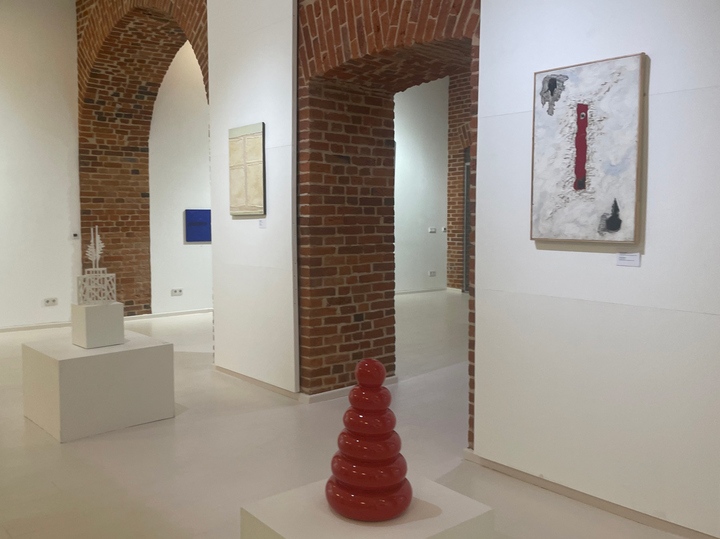
And today in the house-commune the creative spirit is preserved, in which polyphony of different eras is heard. The exhibition “Polyphony” brought together recognized authors – Yuri Zlotnikov, Igor Shelkovsky, Francisco Infante, Igor Novikov, Olga and Oleg Tatarintsev. On the first floor, which is visible through the street through large windows, paintings and art objects are exhibited, and on the underground floor, more intimate, graphic items.
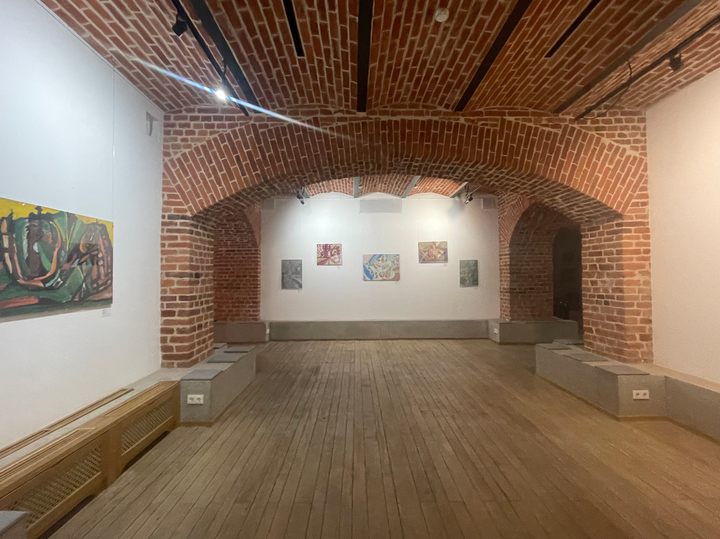
From the general choir of “other” artists (there are 16 of them in total and each sings in his own individual way), several stand out – due to the quantity and quality of the works presented. Most of all in the exhibition of works by Marlen Spindler, Igor Vulokh and Igor Novikov.
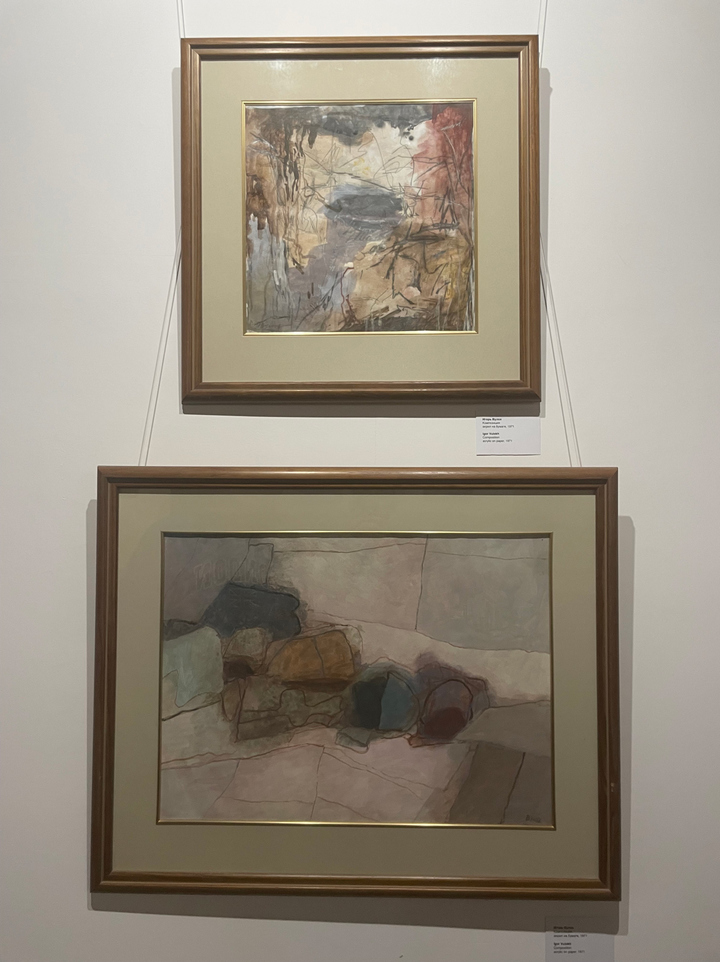
Marlene Spindler is one of the most tragic figures in the art of the second half of the 20th century. The general public was able to appreciate his work only in 1996, when his big retrospective was held at the Tretyakov Gallery. On it, the author appeared in a wheelchair, to which he was chained after a stroke. At that time, Spindler’s direct impulsive manner was spoken of as a discovery, although he had been known in expert circles for a long time. His plastic language stands out against the background of all “other art”, rich in experiments and innovative practices. Spindler had a difficult fate – he spent about 15 years in the camps.
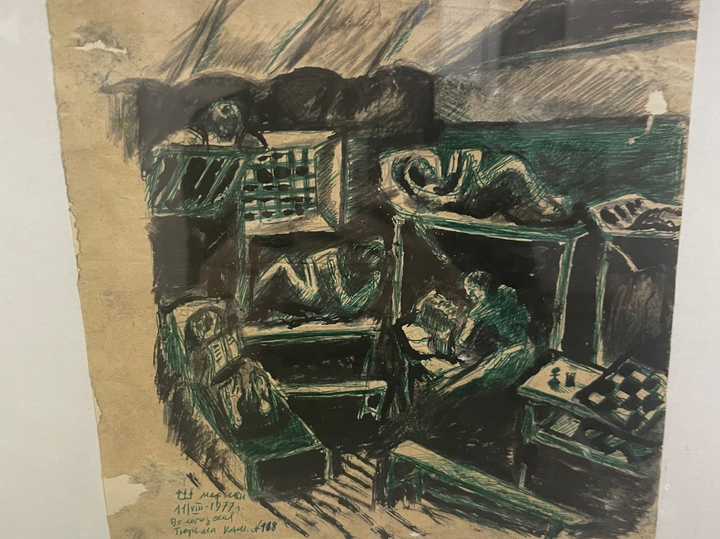
The artist, it would seem, with a female name (in fact, this is a Soviet neologism-abbreviation: Marx + Lenin = Marlene) received a completely academic education and started with classical graphics. He studied at the art studio at Mosfilm, and then worked at the Graphic Arts Combine, where he created more than 200 trademarks. But student painting experiments were soon replaced by experiments that ran counter to socialist realist attitudes and could not receive official recognition in the USSR. Lack of demand led to alcohol abuse and situations followed by prison terms. He was released only in 1989. In exile, the artist continued to write. Many of the works presented at the exhibition depict prison everyday life – they merged all the emotions that the artist experienced in such conditions. Among the graphic works there is, for example, a plot called “The Prisoners’ Walk”: we are watching the prisoners from the height of the brown tense sky, the gray figures of the prisoners resemble ghosts, over which crows are screaming. And here is a drawing from a prison cell in dark green tones: all the prisoners are busy reading, and it seems that their thoughts are swarming in the ringing swamp silence…

Marlene often signed his works with three crosses. In his paintings, domes of churches often appear, various Christian motifs. And at the same time, they contain totemic pagan images with Latin American motifs. The almost primitive narrative, the impulsive plastic language of Marlen Spindler strikes with childish sincerity and philosophy characteristic of wise elders. Spindler’s appearance – with his Marxian beard, lion’s mane and surprised look – corresponded to this image.
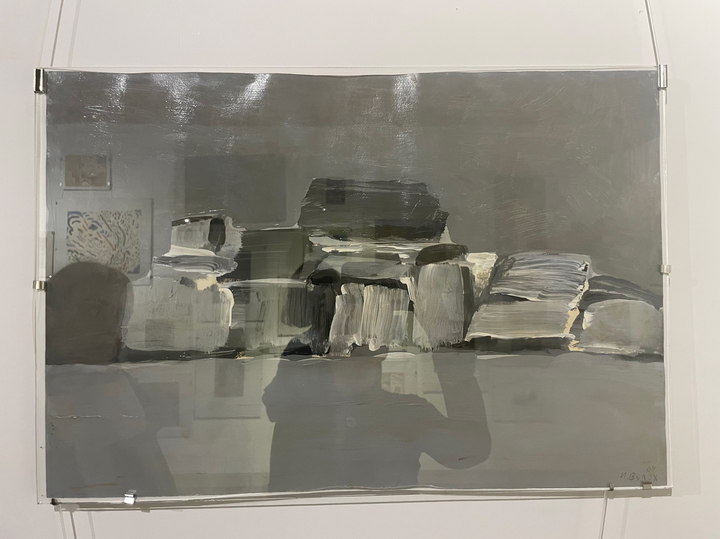
Igor Vulokh is considered a classic of abstraction and one of the main nonconformists of the sixties. He, too, had a difficult fate. In 1941, his father Alexander Vulokh went to the front and died a year later. At the same time, four-year-old Igor Vulokh ended up in an orphanage as a homeless child. The mother found her son only a few years after the war. Life in the orphanage left an indelible mark on the subconscious of the boy from Kazan, and it seems that art has become a comfort for him. From the Kazan Art Institute, where Igor Vulokh studied from 1953 to 1958, he came out as an already established artist. In 1957, he sent his landscape “Winter” to the All-Union Art Exhibition held in the Manezh, and he was highly appreciated by recognized masters – the painter Konstantin Yuon and the sculptor Sergei Konenkov. Igor wanted to study further – he applied to the Surikov Institute, but they did not take him, considering that there was nothing left to teach him. Then he entered the art department of VGIK, but a year later he left the walls of the educational institution, because he did not want to break himself. But VGIK experience allowed him to get a job at the film studio. Gorky, and in 1966 he even starred in the film “The Heart of a Friend” in the role of political officer Remizov. The turning point in his work was 1968, when he began his “white series”.
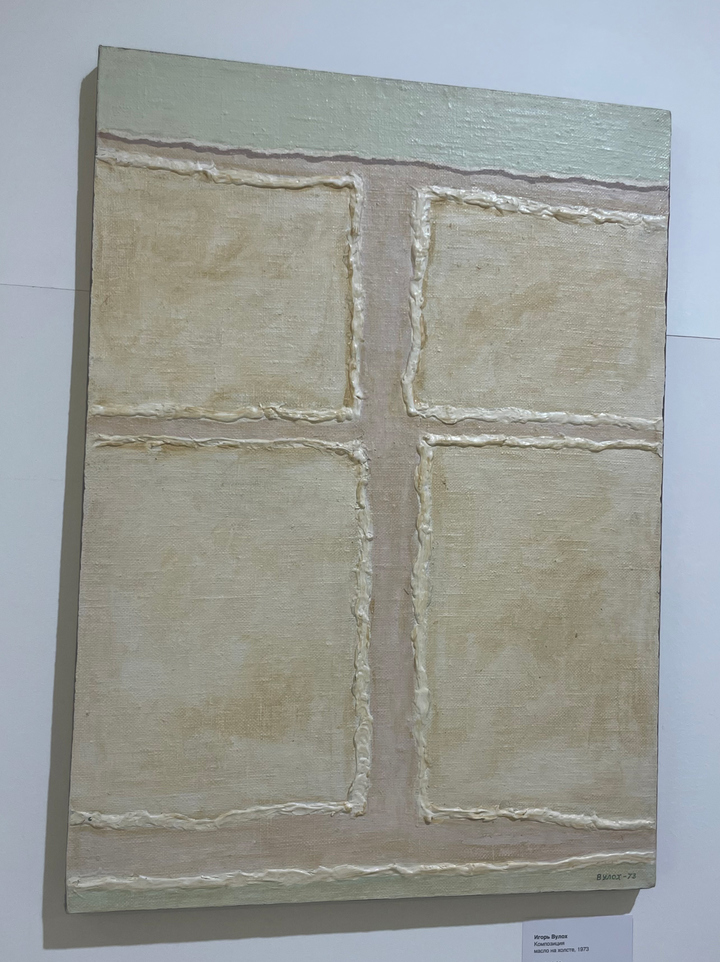
His works – calm and meditative – gradually go into the abstraction of faded colors, where there seems to be no specific plot, but consciousness all the time snatches out a connection with reality in lines and spots. On one of the works presented at the exhibition, we see broad strokes – gray, white, black – and recognize them as books scattered on a shelf. It seems that gray sounds here in all shades and has a special, literary musicality. In another picture – from light, sometimes pinkish, sometimes beige spots – a mountain landscape emerges. “Composition” – a cycle of monolithic abstractions cut through with cracks – creates the feeling that we are looking at reality through a telescope or a magnifying glass, it seems that we have before us both the micro- and the macro-world in detail …
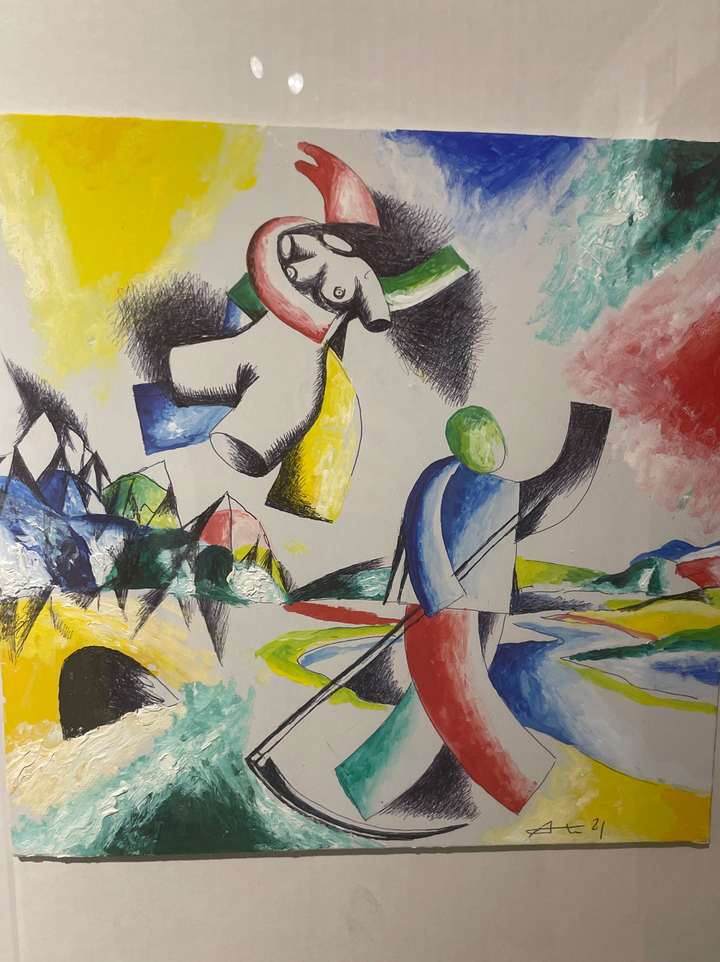
Igor Novikov is a Russian-Swiss artist, a graduate of the Surikov Institute, a native of the squat in Furmanny Lane, in whose blood the DNA of nonconformism pulsates. Igor is the son of the non-conformist artist Alexei Novikov, from that Soviet generation that sought the truth in naive art and went out on its own path, not close to the official line. However, Igor’s work is different from the work of his 93-year-old father – the son found his own style, which, however, also fits into the concept of “non-conformism”. Paintings, drawings and art objects by Igor Novikov are built on a sign system that refers to the origins of the avant-garde, these are pictograms invented by the artist back in the 1980s. As the author says, he was one of the first to “digitize” a person and his genetic code, inventing his own “cipher-sign”. Novikov often inscribes his pictograms into the paintings of classical Russian and Western masters. Many of his encrypted canvas-codes turned out to be prophetic. Novikov says that his task is to show the time in which we live. Here is one of the latest compositions. Before us is a clean landscape – a blue sky, a transparent river, green banks. Against the backdrop of classical beauty, a temple of clear geometric shapes and a white conditional silhouette, swaying alone on a balance beam, have grown. The echoing emptiness seems to eat up the familiar reality.
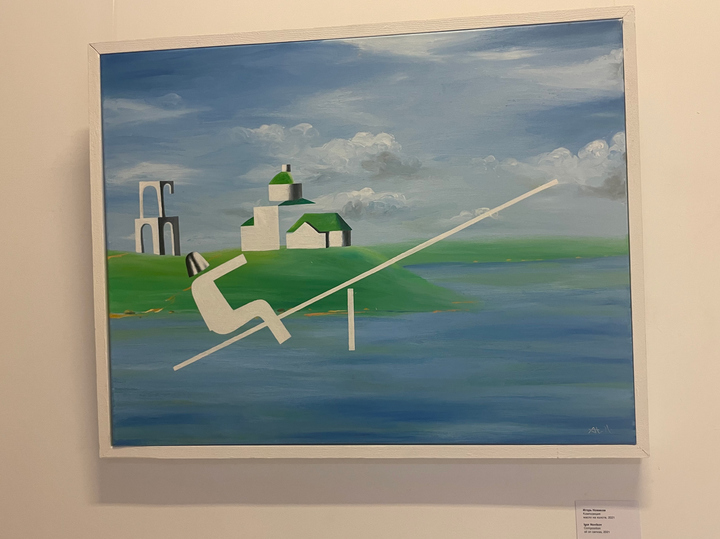
A large series by Igor Novikov in 2021 called “The Gambler” is completely devoid of imagery and is built on pure geometry and color. In bright forms, you can unravel various plots for a long time, often fantastic. Here is a faceless man with a scythe looking after a sculpture of ancient Venus flying across the sky, which is carried away by an unknown ghost. And here is a self-portrait of the artist jumping rope – a white figure with a red oval instead of a head. Next to him is another iconic image – a muse with a dish on which the author’s head lies. In all plots, one motive is heard – the artist, finding himself in a whirlwind of colorful events, tries to save himself, to remain a nonconformist with his own individual voice.
Newspaper headline:
Ringing polyphony
[ad_2]
Source link






